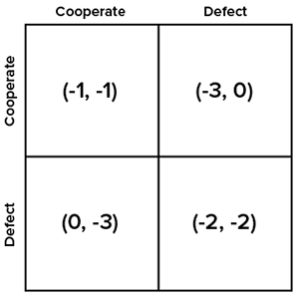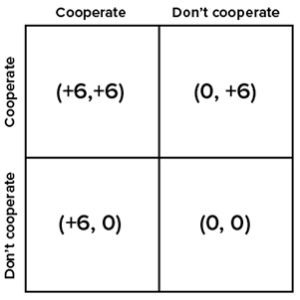The world of data is constantly changing and evolving. New technologies, legislations and policies pressure companies to re-examine the way they deal with data. Because it’s better to be prepared than to be surprised; here are five interesting ways of how the world of data is changing.
1. More and stricter legislations
The General Data Protection Regulation (GDPR) was not the first legislation cracking down on irresponsible data use, and it certainly won’t be the last. Government and non-government institutions around the world are establishing new policies and laws for processing data in a more ethical, transparent and secure manner. Some examples of recent laws are the California Consumer Protection Act (CCPA), the Indian Data Protection Bill and the Brazilian General Data Privacy Law (Lei Geral de Proteção de Dados Pessoais or “LGPD”). Even in Africa, a continent where more than half the countries have no data protection law, change might be on the horizon with Kenya drafting a new law to protect customer data. With a future of increased legislative pressure, solutions built for compliant consent and encryption are becoming increasingly important.
2. People are more aware than ever
The days that data subjects were ignorant of the data being collected about them are gone. In May 2018 the Global Alliance of Data-Driven Marketing Associations (GDMA) published their research on global privacy attitudes, based on a survey conducted in November 2017 across ten countries. The report showed that while the majority of the respondents was prepared to share their data, 74% of respondents reported being ‘concerned’ about their online privacy, with 83% indicating wanting more control over the data they share.
With incidents like the scandal of Facebook and Cambridge Analytica occurring earlier this year and the GDPR coming into effect, awareness of online privacy has only increased. A study by Janrain conducted in the US showed that 57% of respondents had increased concerns about their data privacy as a result of the Cambridge Analytica scandal. Additionally, according to a survey by SAS, a quarter of consumers in the UK and Ireland have already exercised their GDPR rights. It is clear that people have woken up to the issue of privacy and will likely grow in their understanding and awareness of online privacy issues. Since trust is the foremost reason that customers are willing to share their data with companies (as reported by the SAS survey), building trust through transparency is key in ensuring customers will continue to share data, even if new legislations and policies give them increasingly more power to stop doing so.
3. Privacy-conscious browsers are on the rise
On August 31st, Mozilla announced that it would start implementing changes to the Firefox browser to protect their users’ privacy. Future versions of Firefox will block web trackers by default, meaning users won’t need to take any action to prevent companies from following them across the web. Firefox is not unique in offering this do-not-track option, but is unique in making it the default option. While Chrome is still overwhelmingly the most frequently used browser, the focus on privacy by its number-one competitor combined with doubts about its own incognito privacy mode, might cause privacy-conscious individuals to make the jump.
In addition to established browsers like Firefox making changes to ensure user privacy, new browsers with a focus on privacy also appear to be on the rise. TOR has long been a popular choice to avoid tracking, but other browsers like Epic and Brave have also opted to target the privacy-conscious market. The latter makes use of the anonymous search engine DuckDuckGo and integrates with TOR to make private browsing via its ‘onion network’ easy and fast. On August 28th, Brave announced surpassing 10 million downloads on Android (up from 1.5 million in April).
While most internet users likely won’t make the switch from Chrome to a different browser soon, data analysts and marketers would do well to look at how other browsers are implementing privacy measures, if only to know what to expect when Google is put under pressure to make similar changes.
4. More advanced predictive analytics
The way we collect data may be changing, but so are the things we can do with our data. Predictive analytics using artificial intelligence, deep learning and machine learning are increasingly finding their place in marketing, allowing marketers to not only look to the past, but also into the future when using data. Technologically savvy companies use these advanced techniques to predict customer behaviour, identify potential leads and target customers at the right time with the right products. Research suggests that the investment is worth it: companies using predictive analytics are twice as likely to identify high-value customers, according to a study by Aberdeen Group.
Under the GDPR, many companies are faced with a push towards (partial) anonymisation of data. Technologies such as machine learning might grow in popularity as less data contains personal identifiers. This is because aside from predicting the value or behaviour of a single prospect, these technologies also work well on aggregated datasets without personal identifiers. In this way, they are useful for predicting the behaviour of groups, making them invaluable for predicting various types of market trends. Under the GDPR, then, predictive modelling using machine learning might prove to be instrumental in helping companies deal with larger amounts of (pseudo)anonymous data.
When touting the possibilities of technologies such as machine learning, we would be remiss not to remark upon a possible issue of machine learning in line with the GDPR. Under the GDPR, customers have the right to be informed of how their data will be used and to opt-out of automated decision-making practices. Some experts have suggested that this is difficult to gel with machine learning, as machine learning models are generally not concerned with why specific choices are made. According to critics, constantly adapting ‘black box’ machine learning models cannot be adequately explained to data subjects, making informed consent for data collection impossible. We believe that predictive analytics, including machine learning, are still very much possible under the GDPR, but anyone working with these technologies should be mindful of issues like these and handle them with appropriate care.
5. Focus on data quality, not quantity
Despite the seemingly limitless promises of so-called ‘big data’, many marketers are still drowning in data. Partially to blame for this is the misconception that ‘more data is better’. While this is true to the extent that most predictive models work best with large amounts of data, the importance of data quality should not be underestimated. Both scientists and business experts are now pressing the importance of quality data, the latter stating that bad data can have many negative effects, like wasting time and increasing costs.
Quality data is more important than ever as machine learning becomes more popular. For a model to accurately learn and predict customer behaviour, the data set used to train the model needs to be as accurate as possible. Many companies currently have access to fairly large datasets, but many of these are messy and unorganised. As the use of advanced data mining techniques in marketing and analytics increases, it will be the companies that focus on data quality, instead of just quantity, that will have access to the most reliable models and all the valuable insights that come with them.
Change can be scary, but it can also be good. It’s the organisations that anticipate changes and plan ahead that thrive in data-driven industries. What changes do you anticipate and how are you preparing for them?














 Feel free to contact me, and I will be more than happy to answer all of your questions.
Feel free to contact me, and I will be more than happy to answer all of your questions.